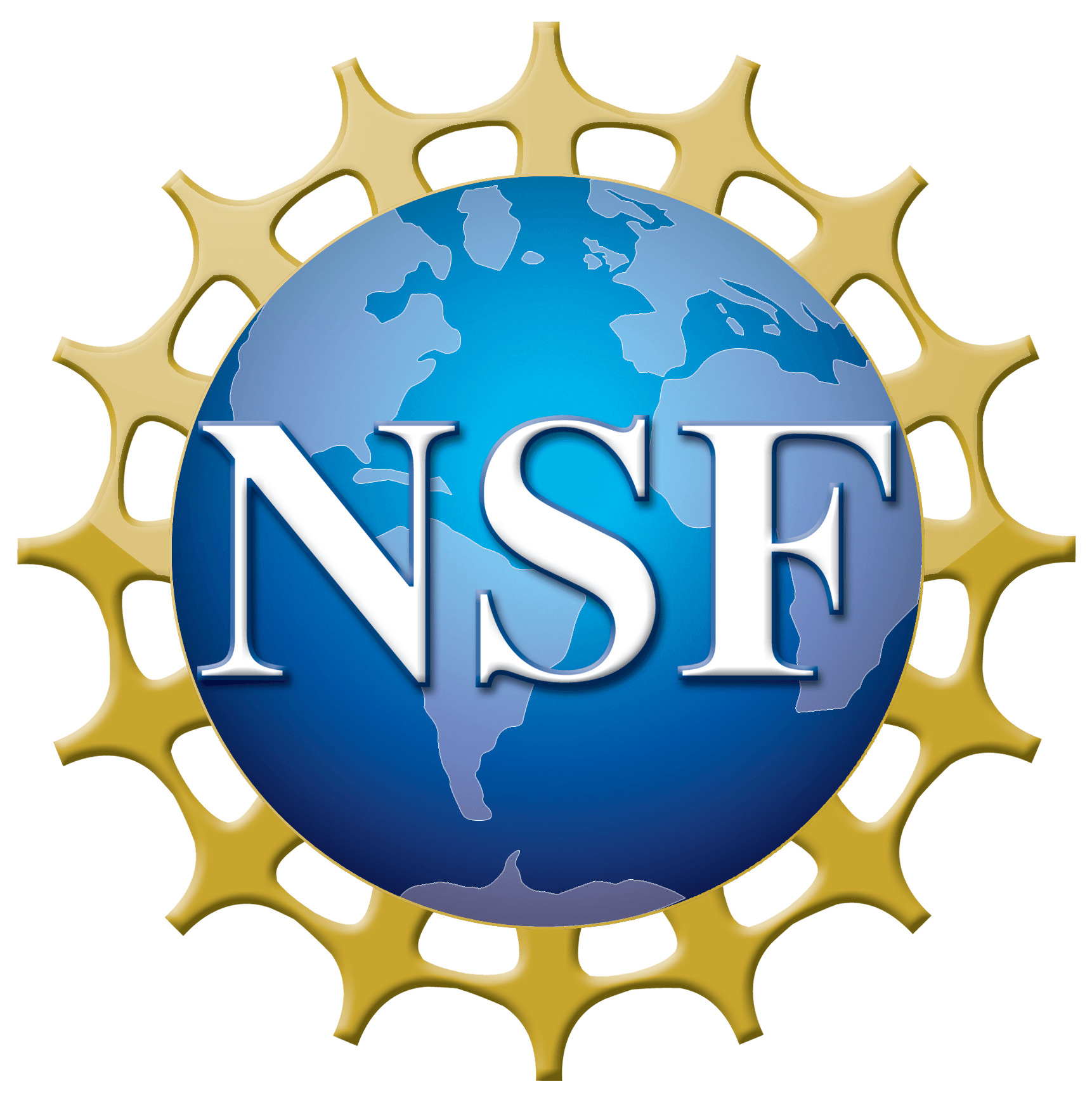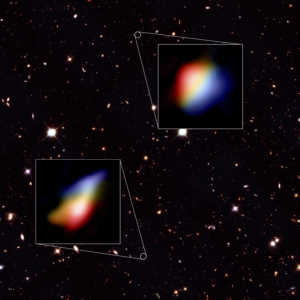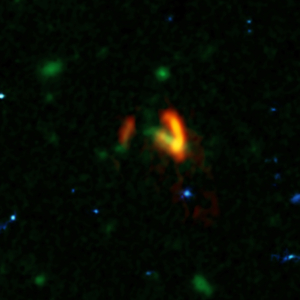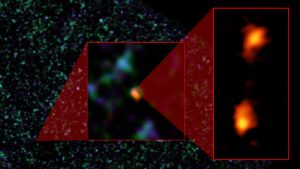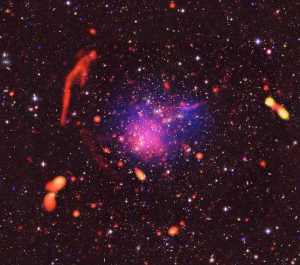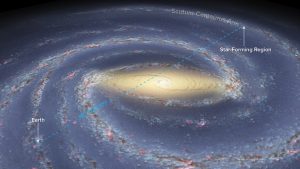Astronomers have looked back to a time soon after the Big Bang, and have discovered swirling gas in some of the earliest galaxies to have formed in the Universe. These ‘newborns’ – observed as they appeared nearly 13 billion years ago – spun like a whirlpool, similar to our own Milky Way.
Massive Primordial Galaxies Found Swimming in Vast Ocean of Dark Matter
New ALMA observations push back the epoch of massive-galaxy formation even further by identifying two giant galaxies seen when the universe was only 780 million years old, or about 5 percent its current age.
Duo of Titanic Galaxies Captured in Extreme Starbursting Merger
Astronomers using ALMA have discovered two rarely seen, distant galaxies spiraling in toward each other.
IMAGE RELEASE: Shocking Results of Galaxy-Cluster Collisions
A giant collision of galaxy clusters has produced a spectacular panorama of shocks and energy produced by the violent encounters.
VLBA Measurement Promises Complete Picture of Milky Way
A new record for directly measuring distances within our home Galaxy gives astronomers the ability to finally produce an accurate map of the whole extent of the Milky Way.
Star-formation ‘Fuel Tanks’ Found around Distant Galaxies
Using ALMA, astronomers studied six distant starburst galaxies and discovered that five of them are surrounded by turbulent reservoirs of hydrogen gas, the fuel for future star formation.




